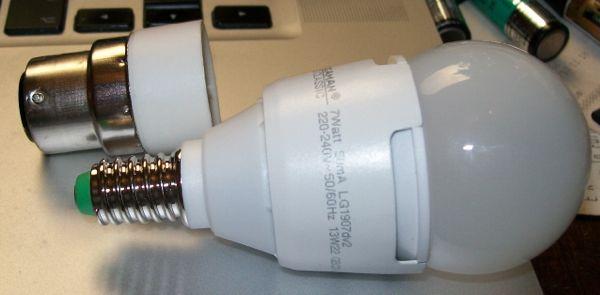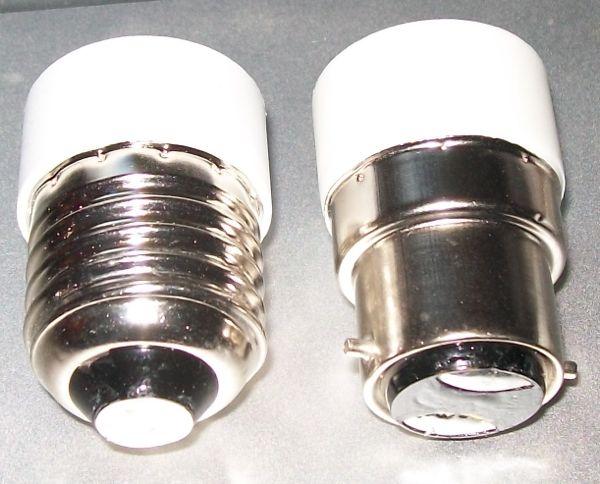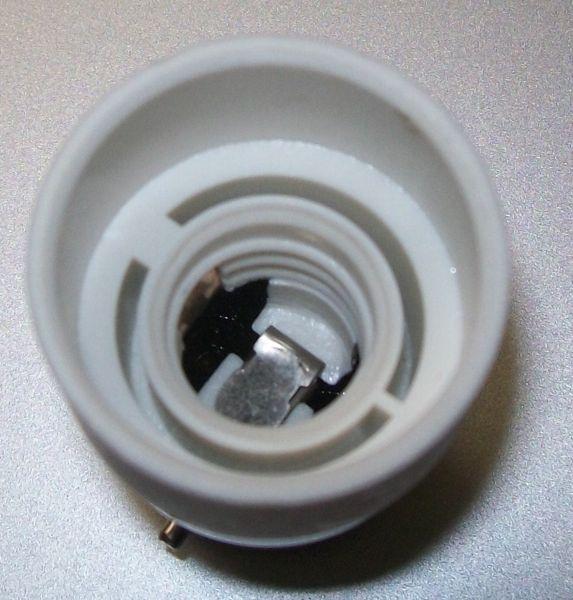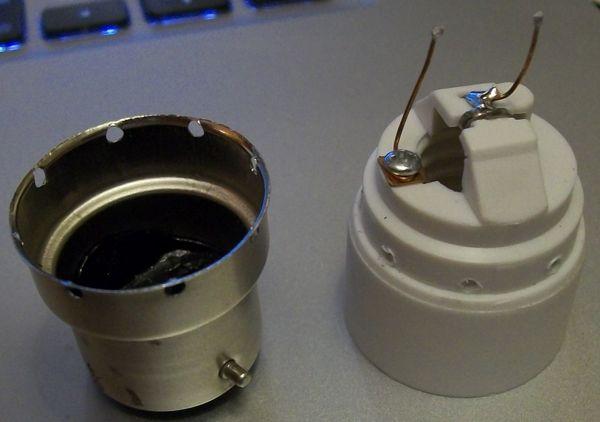OK, the autopsy report is in.
It's clear that the short isn't "intentional", but it is almost inevitable. My guess would be that if I open up the ES adapter, I'd find the side terminal extended to be trapped between insulator and cap, while on this BC adapter it's merely going to be touching. I'm fairly certain there was no gap at all, I've looked closely at the terminal and inside of the cap and see no evidence of an arc as would be present if it wasn't touching (I'm assuming I had a L-E fault as it blew the fuse in the plug).
So I'm inclined to think that this is something that's too serious to not take to Trading Standards - or does anyone think a different body would be more appropriate ?
1) It's almost guaranteed to have a short between one terminal and the cap. Even if there isn't a short, the clearance will be very small indeed.
2) There's a roughly 50-50 chance as to whether the cap will be connected to line or neutral.
3) Looking round out house, the majority of sockets (where they are plastic and hence won't just trip the MCB and/or RCD) do not shroud the bulb so as to make the cap untouchable.
4) This isn't just a "switch it off while changing a bulb" things - a lot of people use switches on table lamp holders and would be at risk of touching the exposed cap while feeling around for the switch.







